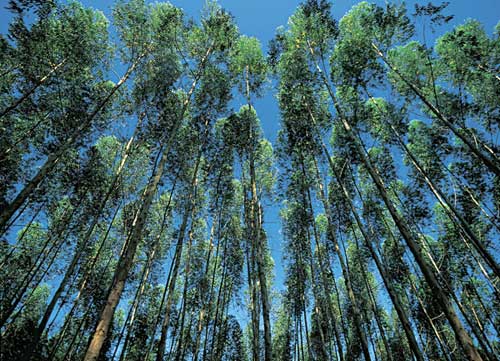Hardwoods in Green Building: Plantation-grown Eucalyptus Makes its Mark as a Versatile, Sustainable Exotic Species
Learning Objectives:
- Describe the environmental advantages of wood.
- Explain how sustainable forestry practices and certification support green building goals
- Discuss the environmental benefits of plantation-grown eucalyptus.
- Articulate residential and light commercial eucalyptus applications.
Credits:
As concerns grow about climate change and other potential impacts on the human and natural environment, design professionals are increasingly challenged in specifying sustainable architectural materials. Hardwoods have always been popular choices in architectural finish applications due to their natural appeal, beauty, and durability. Yet concerns about deforestation and illegal logging - especially in tropical areas - have led designers to question the role of hardwoods in green building.
As an overall class of materials, wood products can play a significant role in helping reduce greenhouse gases in the atmosphere. The best way to ensure that trees - and hardwoods in particular - will provide for future generations is to select those woods that have been harvested according to sustainable forestry practices. This course will discuss sustainable forestry and other design issues to consider when selecting and specifying wood over other materials for architectural finishes. Also highlighted will be plantation-grown eucalyptus that has been certified by independent sustainable forestry programs as one type of increasingly popular hardwood that can help meet green building objectives.
Environmental Advantages of Wood Products
A primary advantage of wood in green building projects is that it comes from a renewable natural resource. Unlike petrochemicals used in making plastics and ores used to make aluminum, iron and other metals, trees obtained from plantations and forests that are properly managed can be harvested and replanted in subsequent cycles to help ensure a continuous supply, making wood one of the few truly renewable materials. In addition to its renewability, wood products have several obvious advantages over other types of building materials: they are non toxic, waste efficient, biodegradable and recyclable, and can make a contribution to combating global warming.
 |
Sustainably grown hardwoods help reduce greenhouse gases in the atmosphere. Photo courtesy of Weyerhaeuser |










